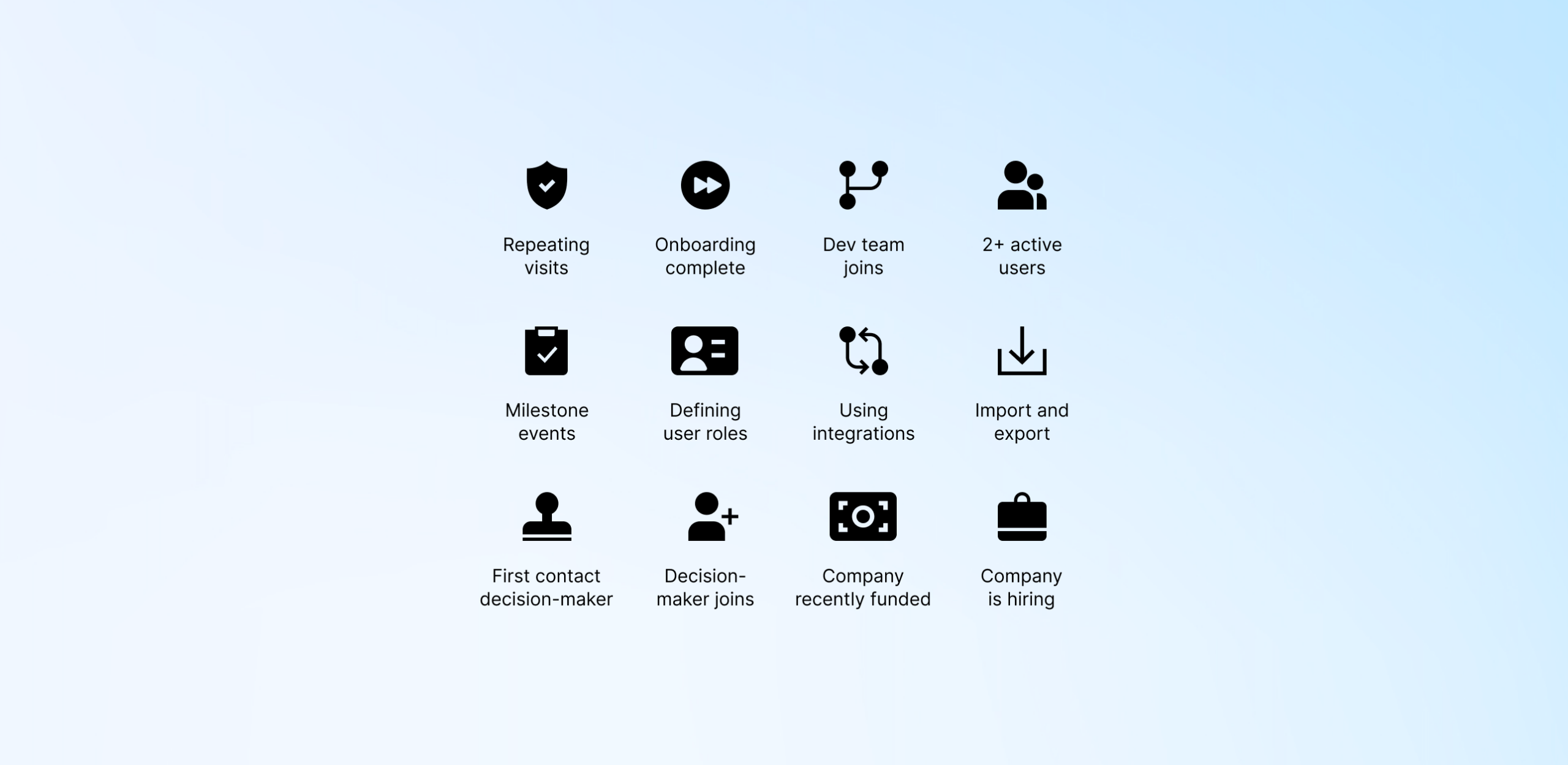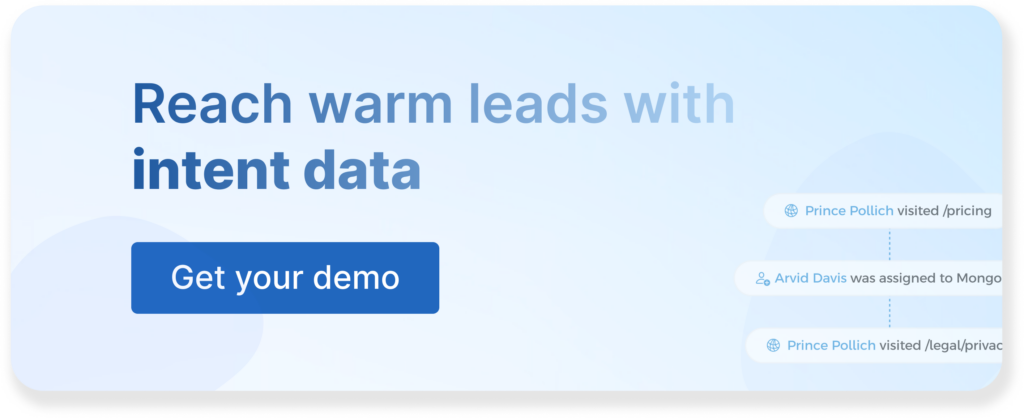Intent data is what you need to understand which lead is ready to purchase. But, as the dynamics of B2B and B2C differs, the data you need to take into consideration also changes.
In B2B, intent is not only related to the actions of individual leads, but also covers the collective behaviour of the entire team and company activities. As a result, it is important to treat intent data at the account level, capturing the entire company’s activities and interactions as a unit.
Let me share 10 B2B intent data that you should keep an eye on and have a proper algorithm in place to identify the accounts that are performing them.
What is B2B Intent Data?
B2B intent data is the activities taken by a potential customer that illustrates interest into purchase. It focuses on capturing the collective interest at the account level, rather than just individual actions.
This means it tracks behaviors and activities of entire company helps in personalized engagement, funnel management and account-based marketing and sales.
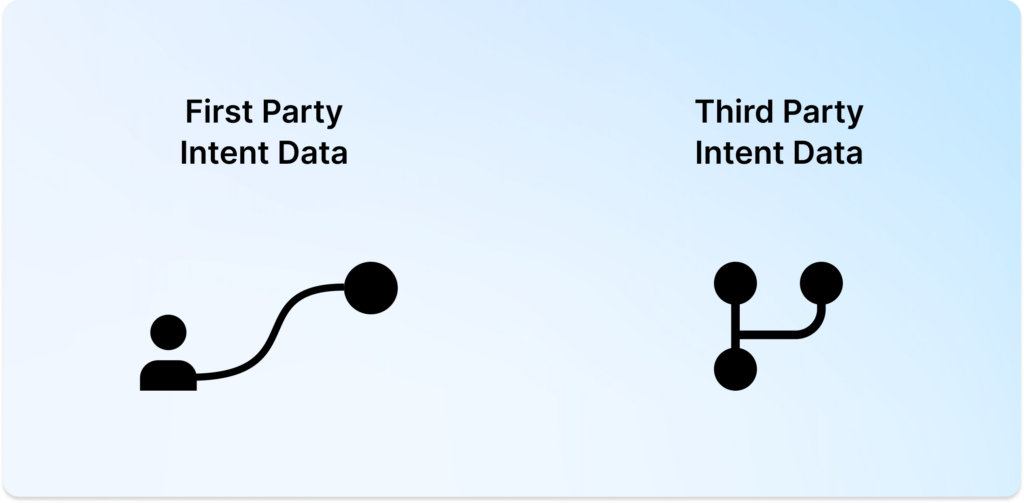
What is First Party Intent Data?
First party B2B intent data is collected directly from the interactions between your product and potential customers. This includes data from direct website engagement and product usage. For B2B, this data is particularly valuable because it provides insights into how accounts interact with your content and services directly.
- Shows how deeply and effectively potential accounts are interacting with your product features.
- Interprets the level of their commitment and readiness to integrate your solutions into their operations.
What is Third Party Intent Data?
Third party B2B intent data, on the other hand, is sourced from external engagement channels and includes behavioral signals across different platforms and services. This data might come from partnership networks, data vendors, or public databases, and it offers a wider view of potential customer activities outside your own ecosystem.
- Gives insights from wider market activities which might indicate a readiness to engage with solutions like yours.
- Provides with company updates and activities that help predict buying intentions.
15 B2B Intent Data Examples and Tips
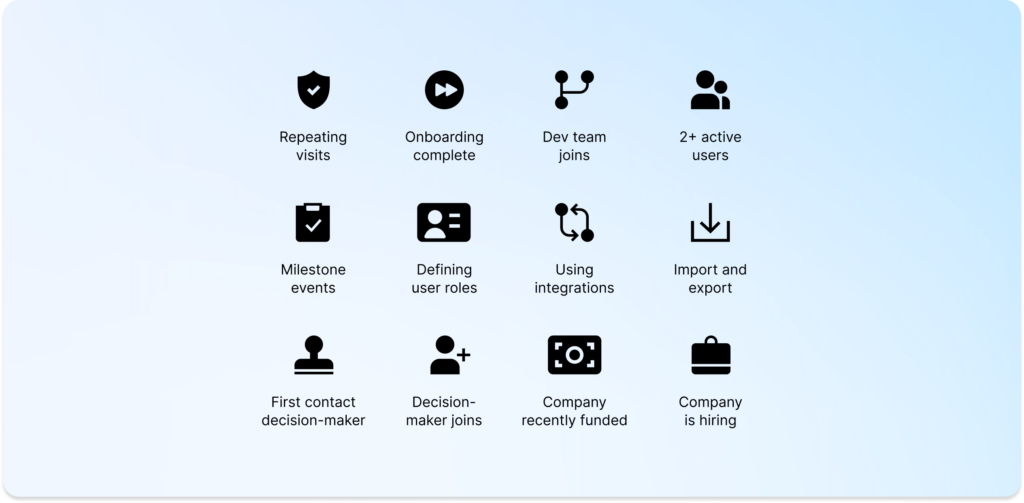
11 First Party Intent Data
1. Repeating visits to 4 pages: changelog, status, security and reviews
When an account’s members repeatedly visit critical pages such as the changelog, status, security, and reviews, it indicates a deep interest in your product’s reliability and development. (Especially European companies visiting security pages.)
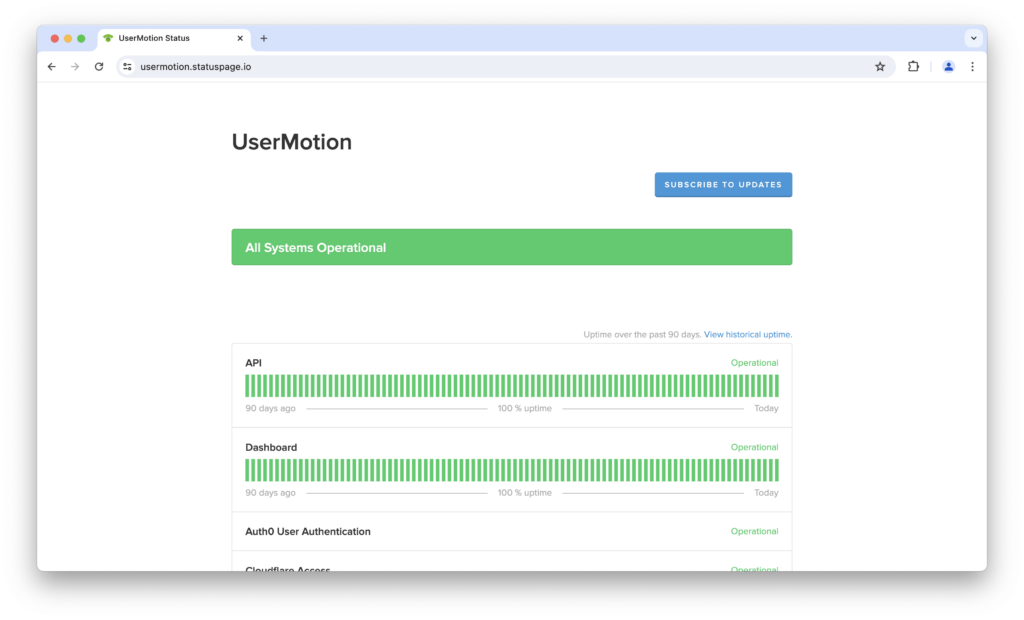
❗️ This indicates high engagement and a serious interest in how your product evolves and secures data.
💡 I suggest you to keep these pages well-maintained and update them regularly to provide the most current information, encouraging continued engagement.
2. Each member of the team completes onboarding
If each team member from an account completes the onboarding process, it shows commitment and readiness to fully use your product.
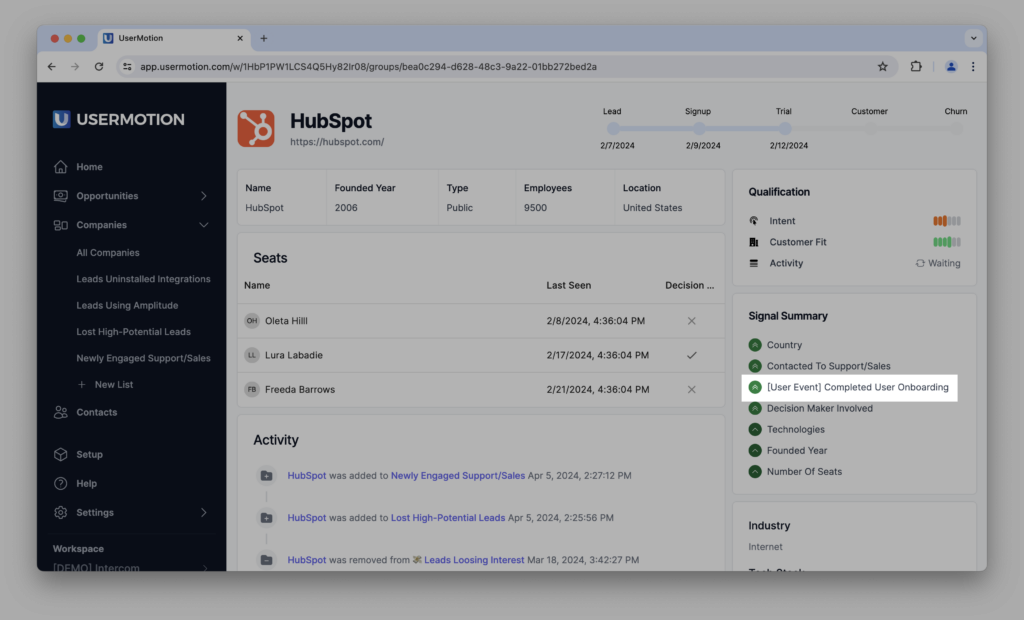
❗️ This completion rate is a strong indicator that the team is likely to continue using the product.
💡 Follow up after onboarding with additional resources or support to help users discover even more value in your product.
3. Inviting dev team for implementations, integrations or setup
Engagement from technical or development teams for implementations, integrations, or setup indicates a serious consideration for technical compatibility and long-term usage.
❗️ This is a sign that they are seriously considering your solution for long-term use.
💡 Offer comprehensive technical support and resources to address their specific setup needs and questions.
4. 2+ active users from the company
Having four or more active users from the same company suggests strong organizational adoption and the potential for purchase.
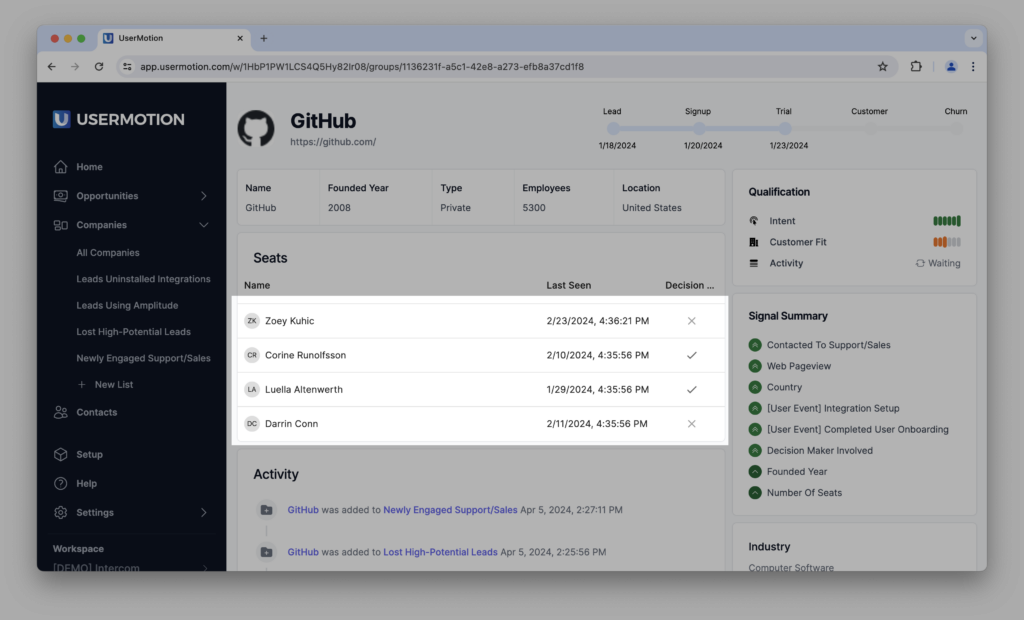
❗️ This active use across the company demonstrates a collective interest and satisfaction with your product.
💡 Monitor user activity to identify popular features and potential areas.
5. Milestone events: completing 2+ events that gives high value from your product
Completion of two or more events that deliver high value from your product demonstrates that the account is gaining substantial benefit.
❗️ These achievements often lead to a deeper commitment to your product as the team recognizes its value.
💡 Celebrate these milestones with the customer and discuss additional capabilities that might be useful for them.
6. Giving role-based access to the members of the team
When an account starts giving specific roles to its members within your product, it shows structured use and integration into their daily operations.
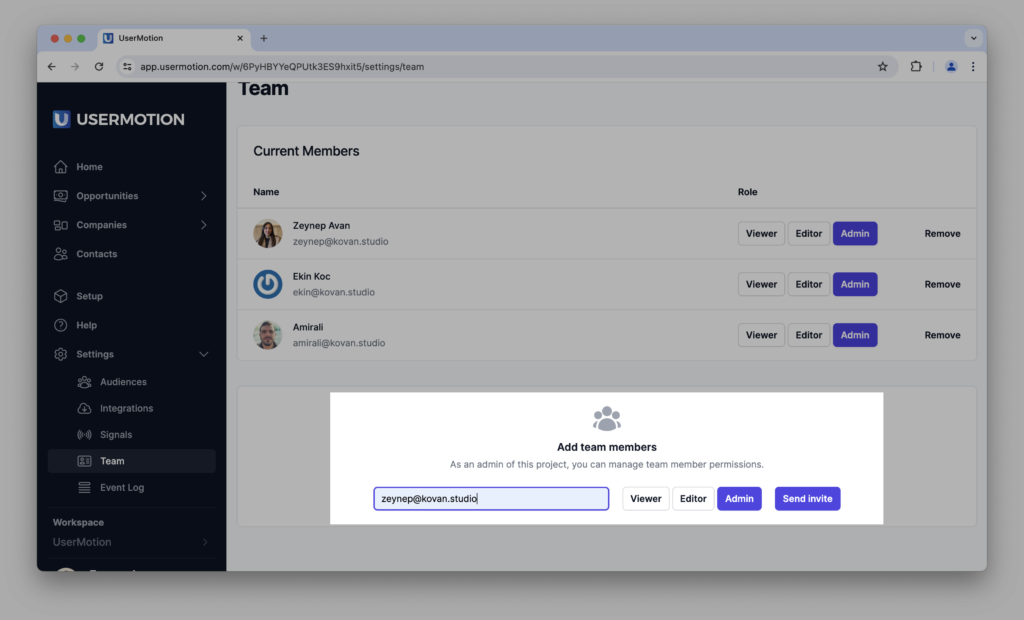
❗️ This organizational involvement typically leads to higher retention and deeper integration of your product into their business processes.
💡 Provide role-specific training and resources to enhance their experience and efficiency.
7. Actively used integrations and automations
Active usage of integrations and automations signifies that the account is looking to maximize efficiency and integrating the product to fit their workflow.
❗️ This level of customization and integration is a strong sign of long-term commitment.
💡 Support them with integration guides and offer personal assistance for complex setups.
8. Import & export actions if necessary
Frequent data import and export actions can indicate that the account is using your product for significant data analysis or management tasks.
❗️ These actions suggest that your product is an integral part of their operations.
💡 Ensure these features are user-friendly, and provide assistance for data security and optimization.
9. Using help and support features
Frequent use of help sections or reaching out to support and customer success indicates that the account is actively using the product and encountering specific needs or issues.
❗️ It suggests that they are working to integrate your product deeply into their processes and are seeking to optimize their use.
💡 Monitor the types of support requests to identify and address common challenges or potential training opportunities.
10. Customizing your product to their brand style
Adjustments to product settings or brand configurations sometimes indicate that the user is fitting their brand style to your product and features to expanded usage.
❗️ Active customization efforts usually reflect a commitment to using your product long-term.
💡 Provide guidance on best practices for configuration and best setups.
Finally, if an account includes decision-makers or matches your buyer persona in the engagement process, it’s a strong indicator of a forthcoming purchase decision.
4 Third Party Intent Data
12. First contact is decision-maker
When the first contact from an account is a decision-maker, it often indicates that the company is closer to be persuaded.
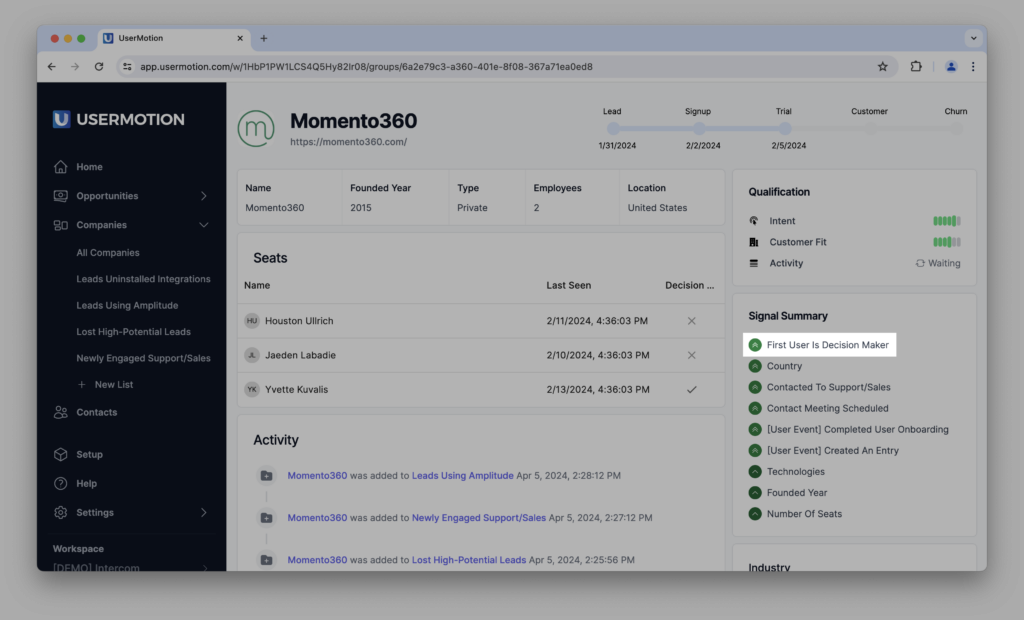
❗️ This initial interaction is an indicator that a purchase decision may be immediate.
💡 Customize your communications and offerings to meet the strategic needs of these key stakeholders, emphasizing long-term benefits and ROI.
13. Decision-maker joins the account
If an account includes decision-makers or matches your buyer persona in the engagement process, it’s a strong indicator of a forthcoming purchase decision.
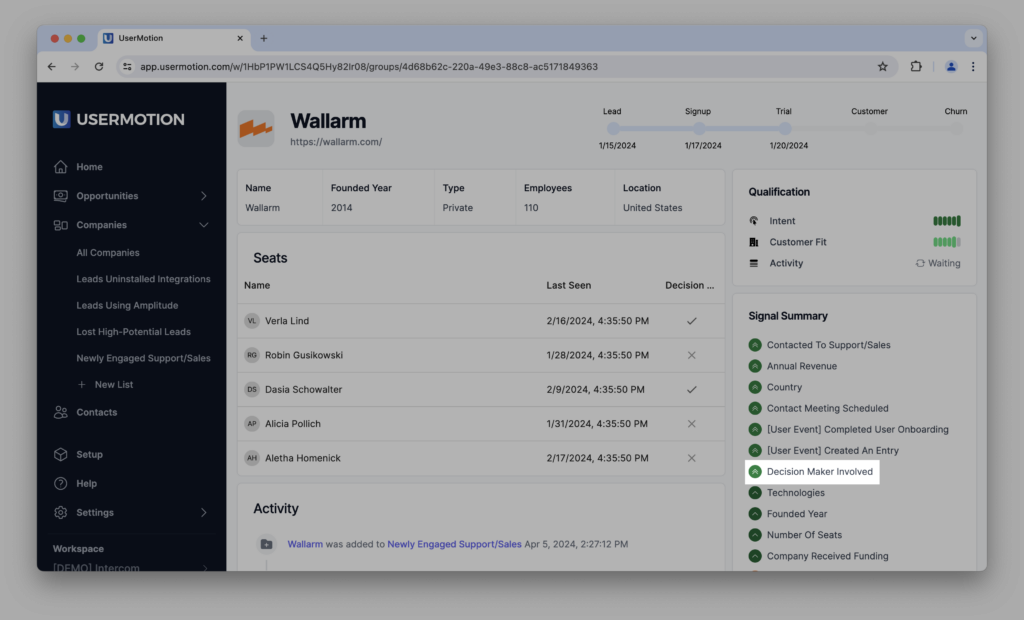
❗️ Their involvement is typically a precursor to final purchasing decisions.
💡 Direct your most compelling sales pitches and information to these individuals, focusing on strategic benefits and ROI.
14. The company is recently funded
If a company has recently received funding, it’s likely they have the budget and intent to invest in new tools and solutions to enhance their growth.
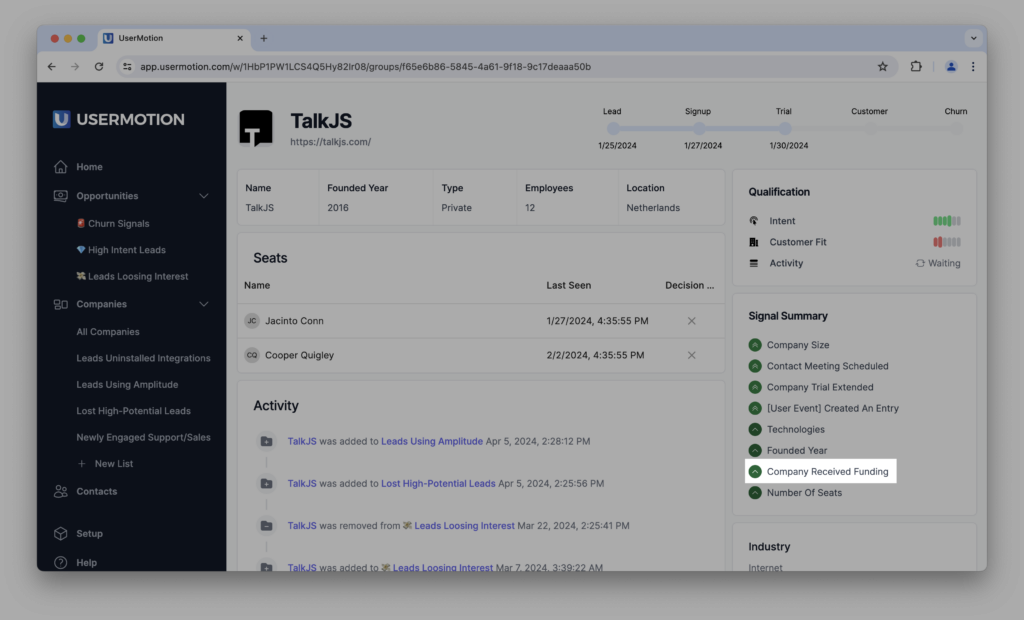
❗️ Recent funding signals readiness to make substantial investments in tools that can drive growth and efficiency.
💡 Position your product as an important investment that can contribute to their newly funded growth plans, highlighting scalability and impact.
15. The company is hiring
When a company is actively hiring, particularly in key departments related to your product’s use, it suggests expansion and an increased capacity for new tools and systems.
❗️ This hiring process often reflects a readiness to adopt new technologies and improve processes.
💡 Engage with these prospective customers by demonstrating how your product can help their growth and streamline new employee onboarding and productivity.
How to Build Intent Data with UserMotion?
UserMotion is a lead scoring platform that helps identifying customer-fit and intent data. Companies uncover high-intent accounts in their pipeline with UserMotion to reach out to the right prospects to increase their sales.
With its predictive algorithm, UserMotion continues to refine its understanding of customer behavior by analyzing interactions across different touch points. This process allows to identify patterns that signify high buying intent, which can be invaluable for sales teams.
1. Send your events
First, connect UserMotion with your CRM and send custom signals either by using the Web SDK track method or the Rest API track endpoint.
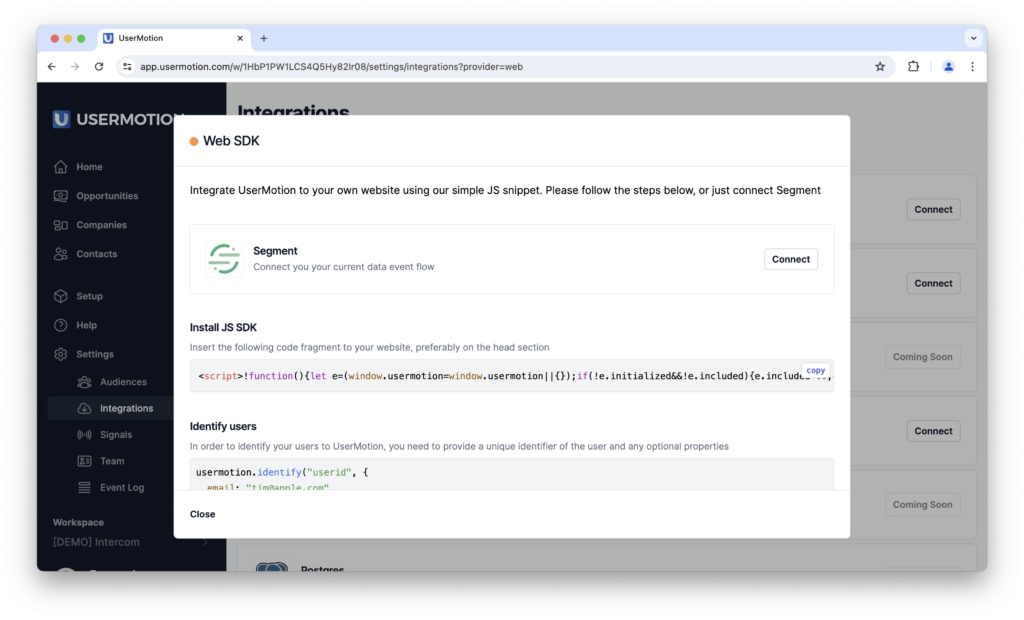
This integration allows UserMotion to access a wide range of data points from customer interactions.
2. Set scores for the effect
Customize the intent scoring model by assigning values to different customer actions based on their potential to indicate buying interest.
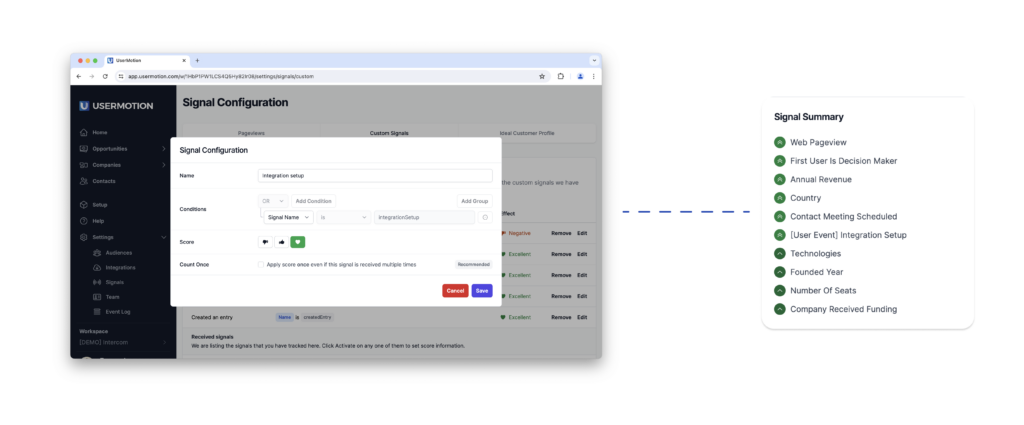
For example, a high score might be assigned to actions like integration setup, which typically suggest stronger buying intent than more passive activities like viewing a blog post.
3. The algorithm starts scoring lead intentions
Once UserMotion has collected enough event data and the scoring rules are set, the predictive algorithm begins to process this information to score leads.
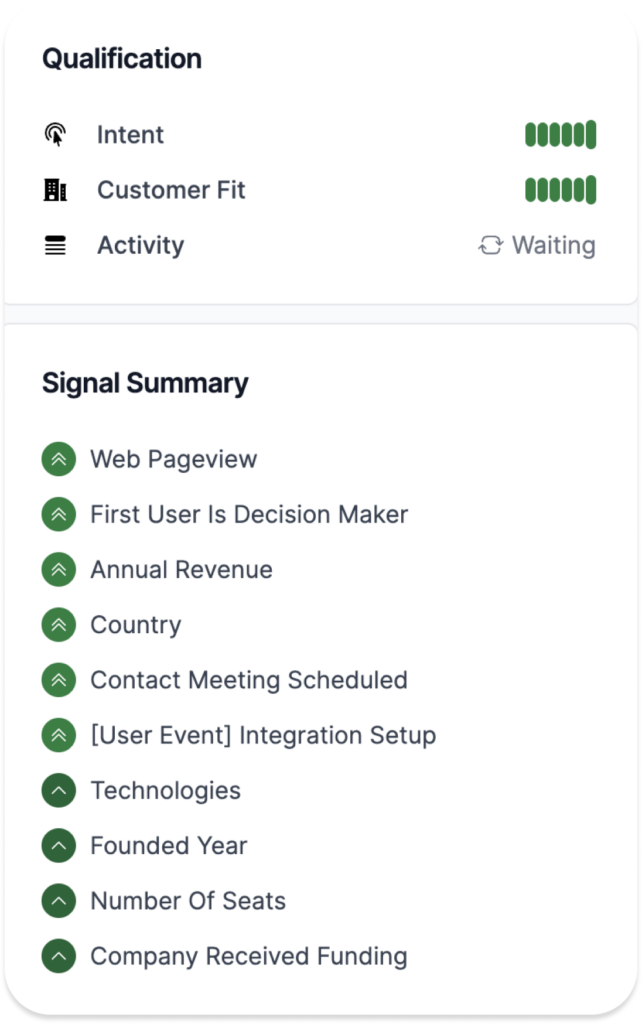
It evaluates the accumulated data to identify which leads show strong buying signals and are likely to convert into paying customers. This ongoing process becomes more accurate over time as more data is collected and analyzed.

